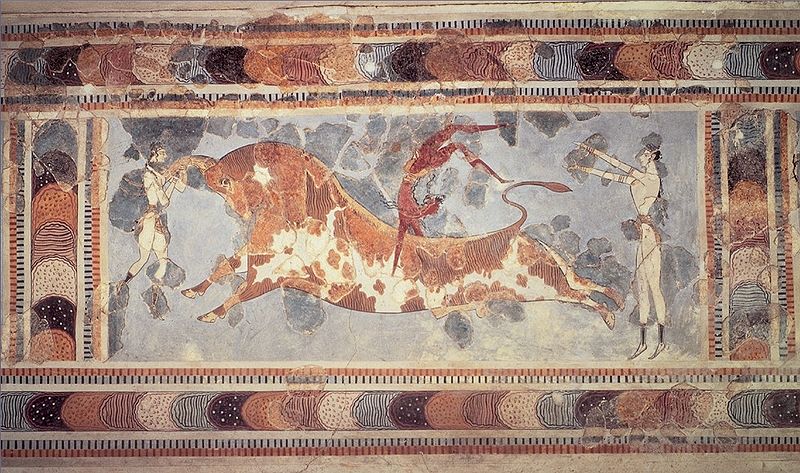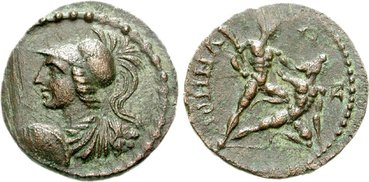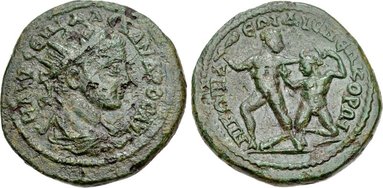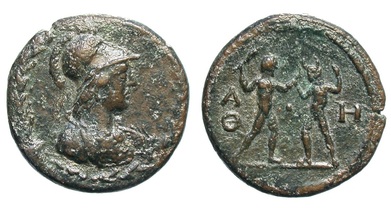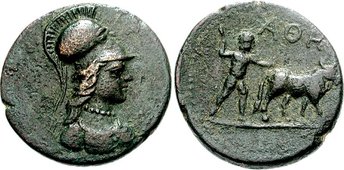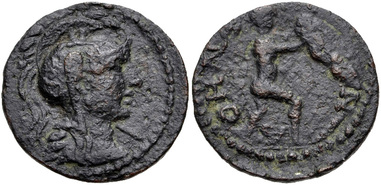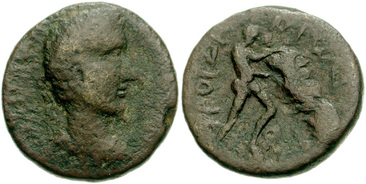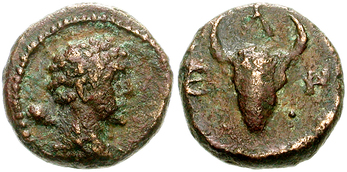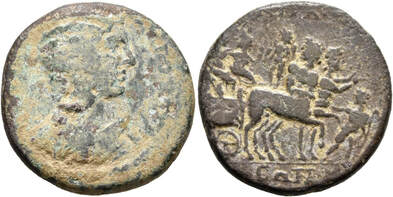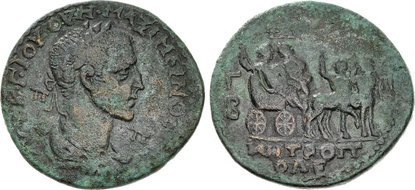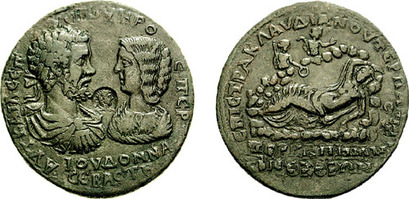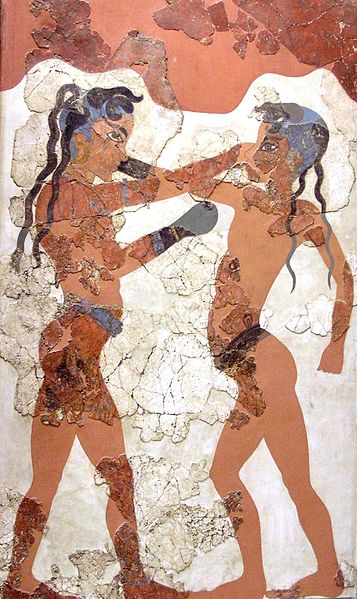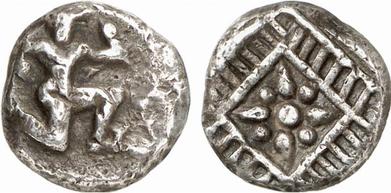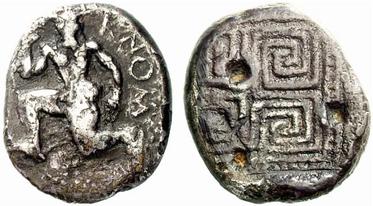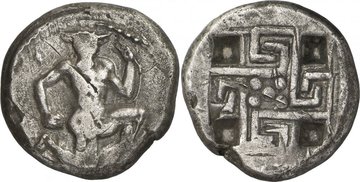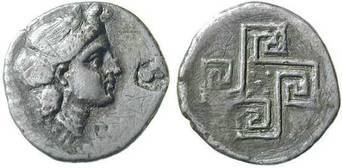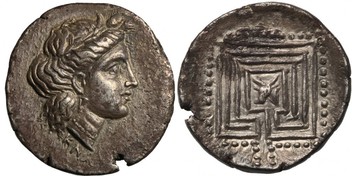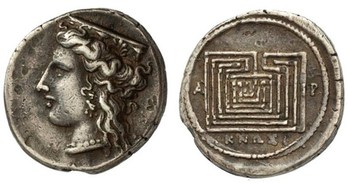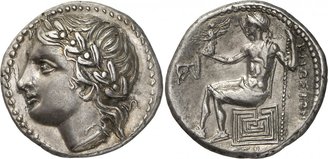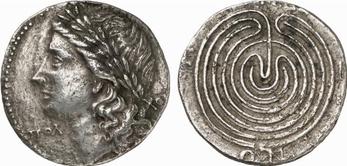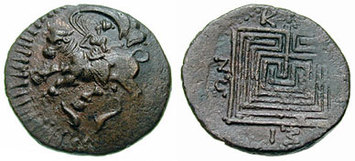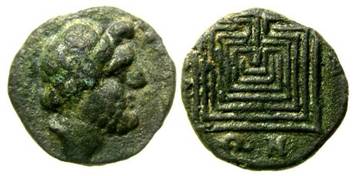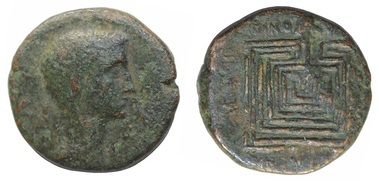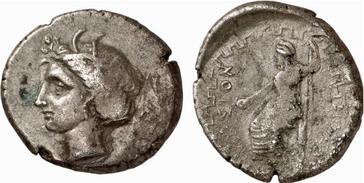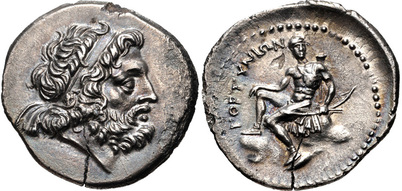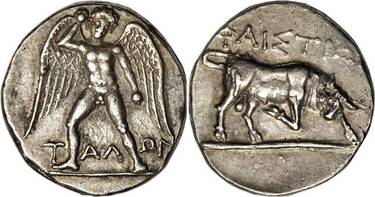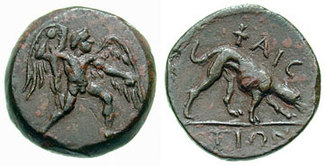Theseus' Numismatic Mythology
Theseus, son of Aigeus, the king of Athens was known for a number of heroic feats on the model of Herakles. The most famous of these feats was his slaying of the Minotaur. Because the city was a tributary subject to Minos, the king of Crete, it was forced each year to send seven youths and seven maidens to the Cretan capital of Knossos to feed the Minotaur, a half-man, half-bull who lived in the Labyrinth. To liberate Athens from this humiliating tribute, Theseus conceived of a plan with his father to join the next shipment of youths. Once in Crete, he would slay the Minotaur, free his fellow victims, and return home. If successful, his returning ship would carry a white sail; if not, the sail would remain the black. With the help of Minos' daughter, Ariadne (who loved him), Theseus entered the Labyrinth and slew the Minotaur. On his return voyage Theseus forgot to replace the black sail, and Aigeus, believing that his son had failed, hurled himself in despair into the sea (know called the Aegean).
There are a number of coins from ancient Greece that celebrate this rich mythological tradition.
There are a number of coins from ancient Greece that celebrate this rich mythological tradition.
